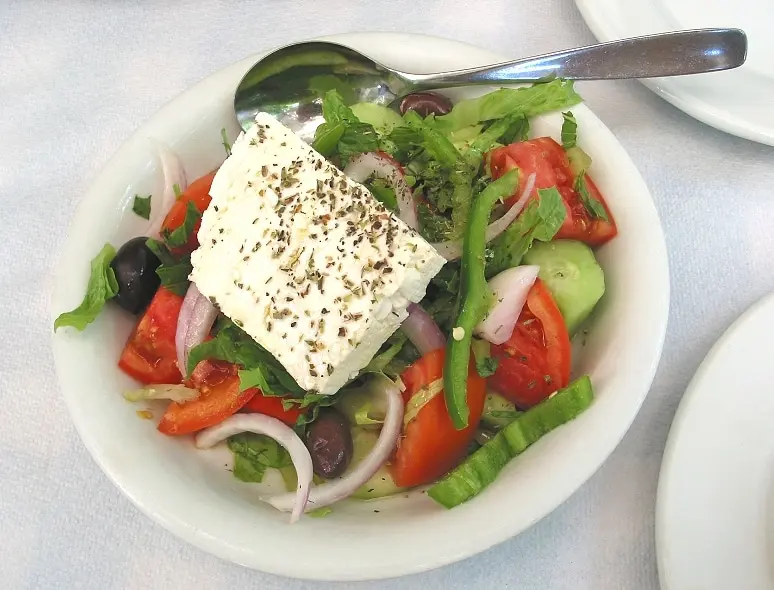
Posted on 07/07/2025 2:49:46 PM PDT by nickcarraway
According to the Academy of Athens, scientists decoded the DNA of the famous Greek feta cheese.
Recently, scientists from the Biomedical Research Foundation of the Academy of Athens studied a wide variety of feta cheese produced all across the nation of Greece in an effort to quantify the nutritional specifics of the popular Greek cheese.
According to findings, feta cheese has 489 different types of protein, making it one of the most protein-rich cheese varieties in the entire world. Feta cheese is a white cheese produced in Greece and made of sheep’s milk, but it can also be made from a mixture of sheep and goat’s milk.
According to the European Union’s law regarding products’ “protected designation of origin,” feta cheese must be produced by using exclusively whole sheep’s milk or a blend of sheep’s and goat’s milk. The goat’s milk can never be more than thirty percent of the total.
Grecian Delight supports Greece
Greece won a long legal battle with Denmark in 2002 over the brand name “feta.” Since then, every package of cheese sold within the European Union that bears the name “feta” must meet specific standards and be produced exclusively in Greece.
Cheese-making is an ancient practice in the Mediterranean with the production of cheese from goat’s or sheep’s milk dating back to the 8th century BC in Greece. This history is accompanied by ancient myths on cheese production, including one in which Apollo’s son Aristaios, raised by nymphs, teaches mankind the art of preparing milk for cheese production.
A cheese resembling feta is mentioned in Homer‘s Odyssey. In the ancient work, the Cyclops Polyphemus is described as a shepherd who lives with a cave full of cheese and milk taken from his flock. Feta cheese, in the form known nowadays, was initially mentioned during the Byzantine era.
Feta is a crumbly, soft, white cheese with a tangy flavor. It is made by placing the curdled milk mixture into wooden barrels. The curdled mixture is quite compact and must be sliced in order to fit into the barrels. The name feta, Greek for “slice,” most likely derives from this practice.
After sitting in the barrels for several days, the cheese curds are placed in brine, a salty water solution, which is essential in creating the cheese’s iconic flavor. This is why feta floats in liquid when you buy it in the supermarket!
Feta cheese is used in many Greek dishes but most notably in what is known as Greek salad, or horiatiki, as well as in baked goods, such as spanakopita and tyropita. Because of its popularity, feta is now used throughout the world in many dishes.


I love Feta...Aldi has a couple awesome kinds...like Tomato basil..
Unless you are referring to something other than cheese, the title is wrong. Cheese is simply protein and other ingredients and does not have DNA. Proteins are a chain of amino acids. However, the cheese needs fungi and bacteria to form and those contain DNA.
And they found…that it was Good.😊
It’s all Greek to me.
Have you heard about the South African man who went to Greece and would only eat cheese?
He got Feta and Feta and Feta.
I've feta myself plenty of it over the years.
I don't think feta cheese sold in US stores has to be produced in Greece. One of many benefits of our not belonging to the EU.
Lovely!
What do you know about fungi?
:)

Not a damn thing....
It was a feta accompli.......
Disclaimer: Opinions posted on Free Republic are those of the individual posters and do not necessarily represent the opinion of Free Republic or its management. All materials posted herein are protected by copyright law and the exemption for fair use of copyrighted works.